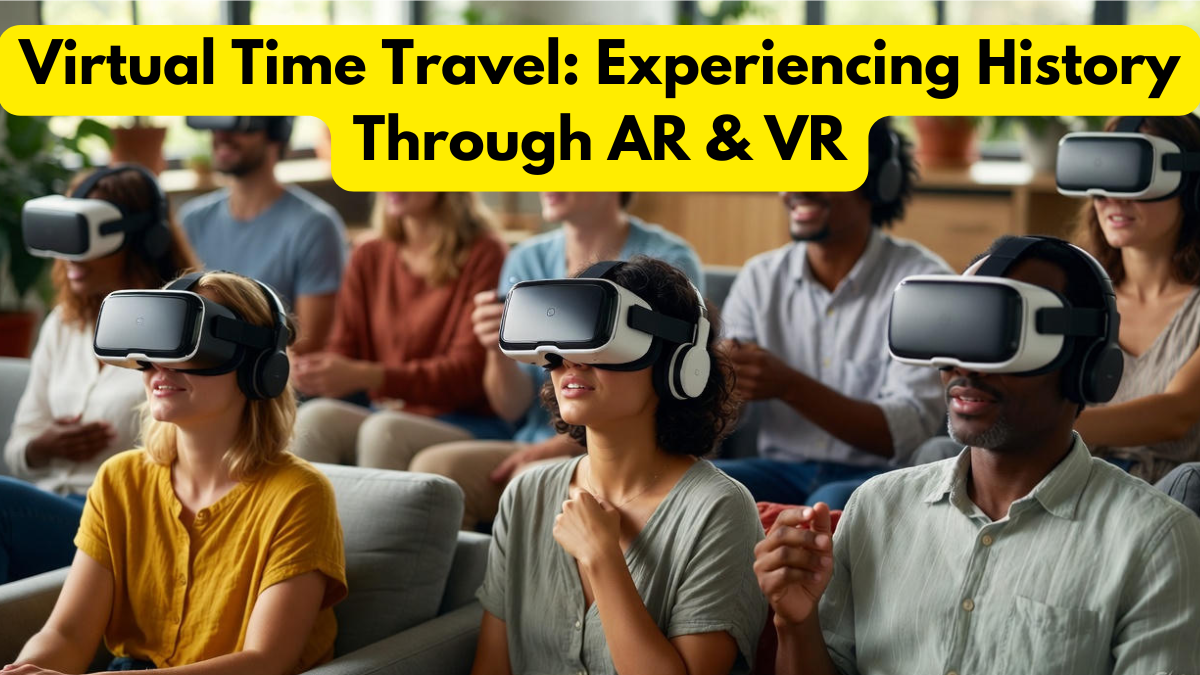The concept of virtual time travel is no longer a dream reserved for science fiction. Today’s advanced AR VR experiences allow users to step into realistic recreations of past civilizations, historic events, and ancient worlds with breathtaking accuracy. Imagine walking through the bustling streets of ancient Rome, witnessing the construction of the pyramids, or standing beside early explorers—all from the comfort of your home. These technologies are revolutionizing education, entertainment, and cultural preservation by transporting users into immersive environments where history comes alive.

How Virtual Time Travel Works
Modern virtual time travel relies on high-resolution 3D modeling, artificial intelligence, motion tracking, and immersive spatial audio. With the help of cutting-edge AR VR experiences, developers reconstruct historical locations using archaeological data, ancient maps, satellite imaging, and artistic recreations. VR headsets or AR-enabled devices then project these digital environments around the user, making it feel like they have physically stepped into another era.
In augmented reality, virtual time travel blends digital layers with real-world surroundings. For example, standing at a historical site might trigger an AR overlay showing how that location appeared hundreds of years ago. Meanwhile, VR creates a fully enclosed digital world that users can explore freely. These AR VR experiences reconstruct scenes with dynamic lighting, lifelike animations, and historically accurate objects, making each journey incredibly realistic.
Benefits of Virtual Time Travel
The rise of virtual time travel brings significant benefits across education, tourism, and cultural heritage preservation. With AR VR experiences, learning becomes more engaging because users don’t just read about history—they experience it firsthand. Instead of textbooks or documentaries, students can explore ancient worlds, examine artifacts, and witness monumental events as active participants.
Key benefits include:
- Immersive learning for students of all ages
- Accessibility to remote or lost historical sites
- Enhanced tourism through digital time portals
- Preservation of cultural heritage
- Interactive museums and educational exhibits
- Better understanding of historical events
- Safe exploration of dangerous or inaccessible environments
These advantages show how virtual time travel, powered by AR VR experiences, is transforming how humans connect with the past.
Table: Traditional History Learning vs Virtual Time Travel
| Feature | Traditional Learning | Virtual Time Travel |
|---|---|---|
| Engagement Level | Moderate | Highly immersive |
| Learning Tools | Books, images | Fully interactive AR VR experiences |
| Historical Accuracy | Limited visualization | Detailed 3D recreations |
| Accessibility | Dependent on location | Available anywhere |
| User Interaction | Passive | Active participation |
| Immersion | Low | High realism through virtual time travel |
This comparison highlights why immersive time-travel technology is becoming the preferred method for modern education and exploration.
Virtual Tourism and Historical Preservation
Thanks to virtual time travel, tourism is evolving beyond physical boundaries. People who may never have the chance to travel to Egypt, Greece, or Rome can still explore ancient civilizations through AR VR experiences. Virtual tourism reduces travel costs, expands accessibility, and minimizes environmental impact. Many museums now offer VR time-travel rooms, allowing visitors to step into historical reconstructions as if they were actually there.
For preservationists, virtual time travel helps digitally restore ruined or endangered architecture. Historical sites damaged by disasters, war, or time can be recreated digitally and preserved forever. With powerful AR VR experiences, historians can visualize structures in their original glory and share them with future generations.
The Future of Virtual Time Travel
The future of virtual time travel will be even more advanced as technology continues to evolve. Developers are incorporating AI-driven characters that interact with users, making reenactments feel even more lifelike. Haptic feedback devices will let users touch objects from the past, adding another sensory layer to AR VR experiences. Full-body motion tracking may allow individuals to walk naturally through historical worlds rather than relying on controllers.
Upcoming breakthroughs may include:
- Hyper-realistic crowd simulations
- Emotional AI recreations of historical figures
- Multi-user time travel where people explore together
- Mixed-reality classrooms using AR VR experiences
- Global virtual history libraries accessible to all
These advancements will make virtual time travel one of the most revolutionary tools for education, entertainment, and global culture.
Conclusion
The development of virtual time travel represents a monumental shift in how humans explore and understand history. With realistic AR VR experiences, people can witness ancient events, walk through lost civilizations, and connect with eras long gone. This technology breaks down geographical, financial, and educational barriers, making history accessible to everyone. As the world embraces immersive technology, virtual time travel will become an essential part of learning, tourism, and cultural preservation. The future of historical exploration is immersive, interactive, and incredibly transformative.
FAQs
What is virtual time travel?
It is a digital experience that allows users to explore past eras through immersive AR VR experiences.
How realistic are virtual time travel environments?
They are highly detailed, using historical data and advanced graphics to recreate past worlds with impressive accuracy.
Can virtual time travel be used in classrooms?
Yes, virtual time travel is increasingly used in schools to enhance learning through interactive AR VR experiences.
Do I need a VR headset for virtual time travel?
VR offers the most immersive results, but many systems also support AR, making virtual time travel accessible on tablets and phones.
Will virtual time travel become more advanced in the future?
Absolutely. With improvements in AR VR experiences, future time-travel simulations will be even more lifelike and interactive.
Click here to know more.